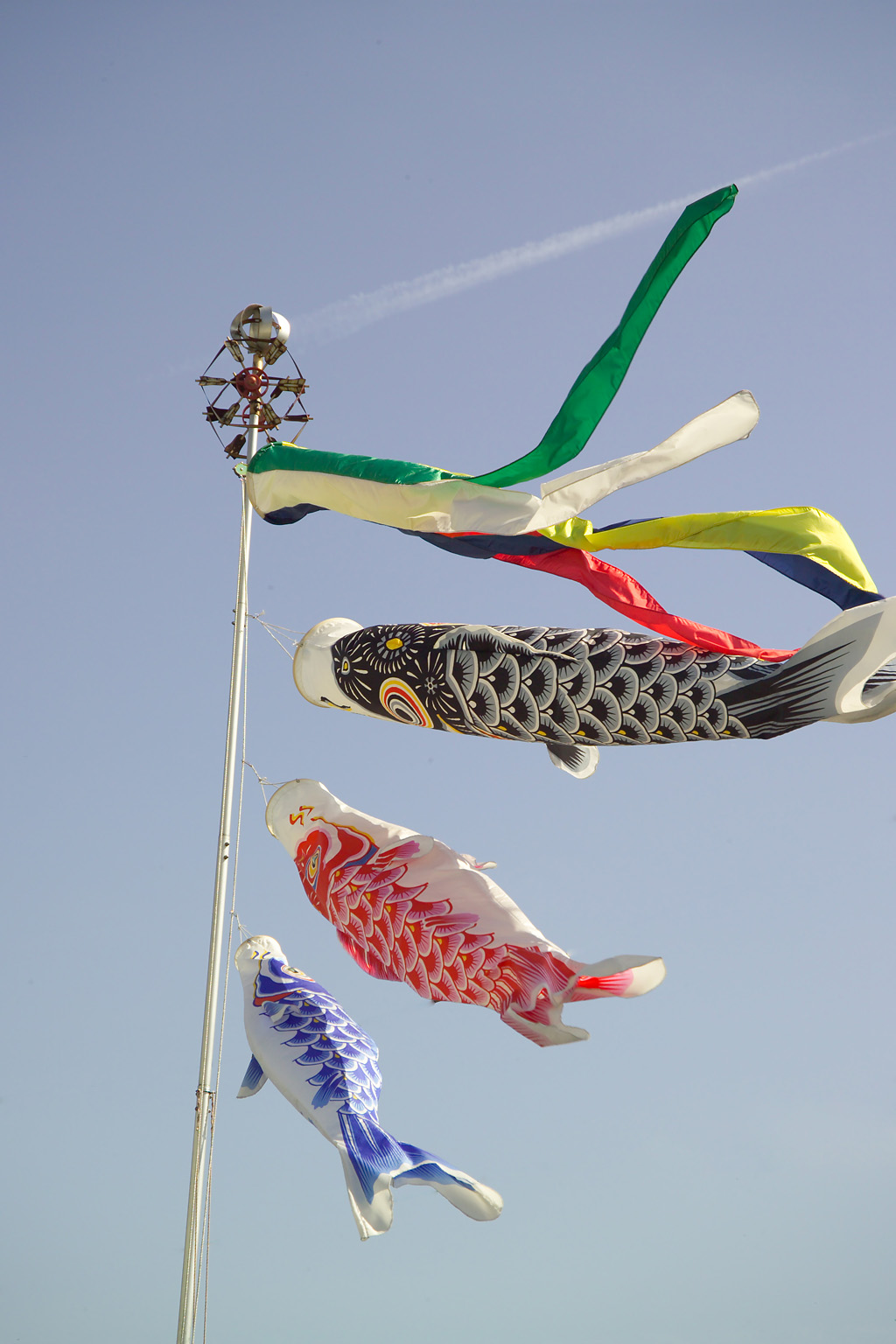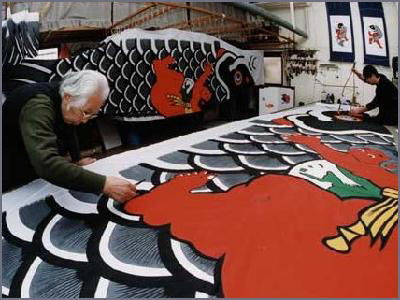Koinobori - Boys Day & Children's Day
In Japan May 5th is Children's day and we celebrate with Koinobori, which are carp streamers which the wind passes through and makes them look like they are swimming.
Koinobori (鯉のぼり), meaning "carp streamer" in Japanese, are carp-shaped kind of wind are hung out of your window and all over Japan to celebrate Tango no Sekku (端午の節句), a traditional calendrical event which is now designated a national holiday: Children's Day (Kodomo no Hi, 子供の日). These wind socks are made by drawing carp patterns on paper, cloth or other non-woven fabric, now nylon are the most popular. They are then allowed to flutter in the wind. They are also known as satsuki-nobori (皐のぼり).
Children's Day takes place on May 5, the last day of Golden Week, the largest break for workers and also a week in which businesses usually close for up to 9–10 days. Landscapes across Japan are decorated with koinobori from April to early May, in honor of children for a good future and in the hope that they will grow up healthy and strong.
A typical koinobori set consists of, from the top of the pole down, a pair of arrow-spoked wheels (矢車 yaguruma) with a ball-shaped spinning vane, flying-dragon streamer (飛龍吹流し hiryū fukinagashi) that looks like a windstock. The number and meaning of the carp socks or koinobori that fly beneath the streamer has changed over time. Traditionally, the set would contain a black koinobori representing the father, followed by a smaller, red koinobori representing his eldest son. If more boys were in the household, an additional blue, green and then, depending on the region, either purple or orange koinobori were added. After the government's decree that converted Boy's Day (Tango no Sekku) into the present Children's Day (Kodomo no Hi), the holiday came to celebrate the happiness of both boys and girls. As a result, the red koinobori came to represent the mother of the family and it is not uncommon for the color to be varied as pink. Similarly, the other colors and sizes of carp came to represent all the family's children, both sons and daughters. At present, the koinobori are commonly flown above the roofs of houses with children, with the biggest (black) koinobori for the father, next biggest (red or pink) for the mother, and an additional, smaller carp of a different color for each child in decreasing order by age.
These koinobori range from a few centimetres to a few metres long. In 1988, a 100m long koinobori weighing 350kg was made in Kazo, Saitama.
The carp was chosen as a symbol for Childrens Day because Japanese consider it the most spirited fish -- so full of energy and power that it can fight its way up swift-running streams and cascades. Because of its strength and determination to overcome all obstacles, it stands for courage and the ability to attain high goals.
Since these are also traits desired in boys, samurai warrior figurines and samurai kabuto helmets are also displayed in homes to inspire strength and bravery.
Children's Day, has been celebrated for more than 700 years, but no one knows exactly when or why it began. One story says that it started in the year 1282, as a celebration for a victory won by samurai warriors in a battle with invaders.





